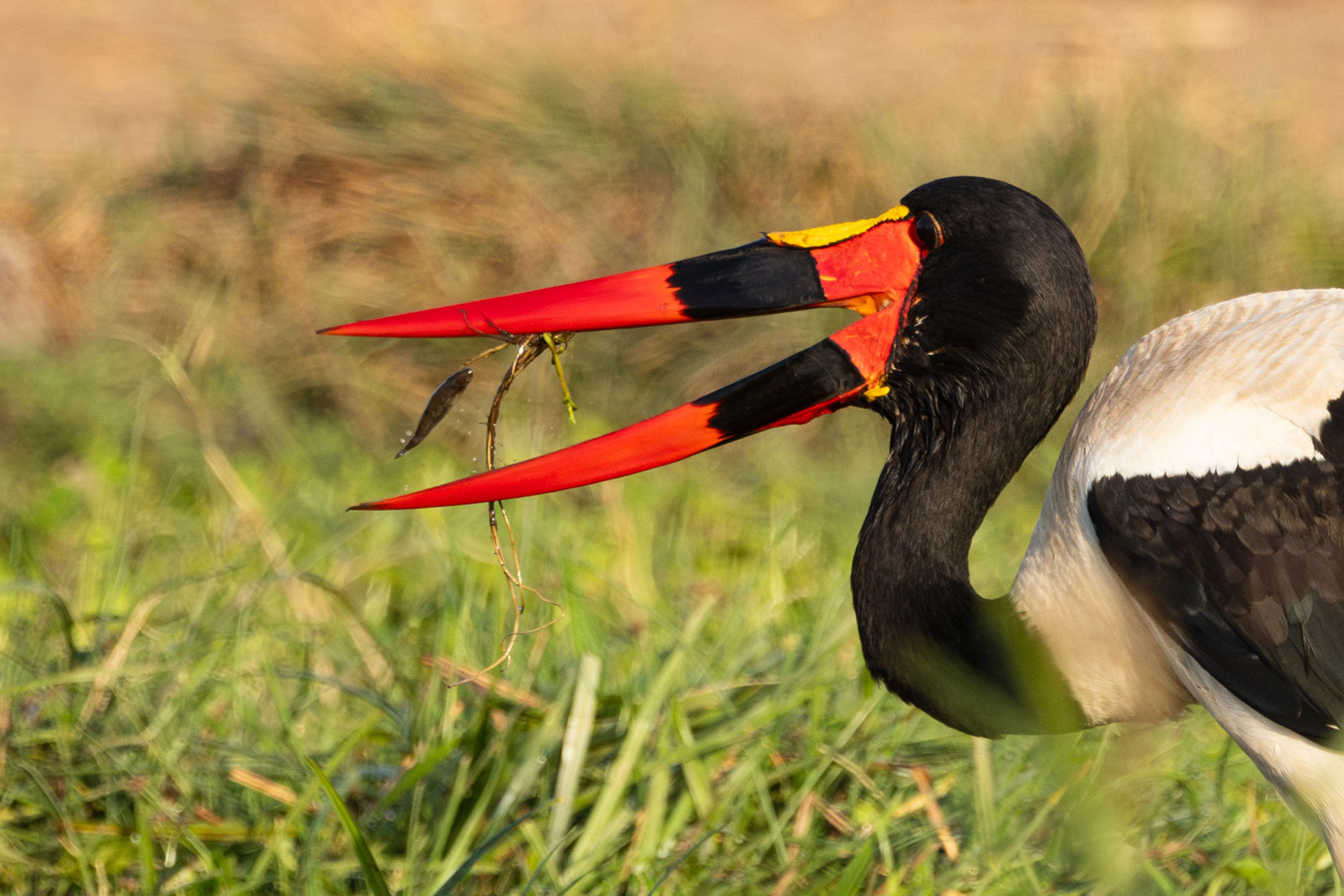
With necks towering about six feet taller than the average human, giraffes are truly fascinating creatures. Their remarkable height is perfectly suited for browsing the treetops and high shrubs, yet it also presents a unique challenge when they seek water. Angama guest Alex had the rare opportunity to witness one of these gentle giants in a vulnerable position as it bent down to drink. In this posture, giraffes are less likely to spot approaching predators like lions, which often exploit this moment of weakness. Moreover, the time it takes for a giraffe to lift its head and regain its footing slows down its ability to flee, increasing its risk in the wild.
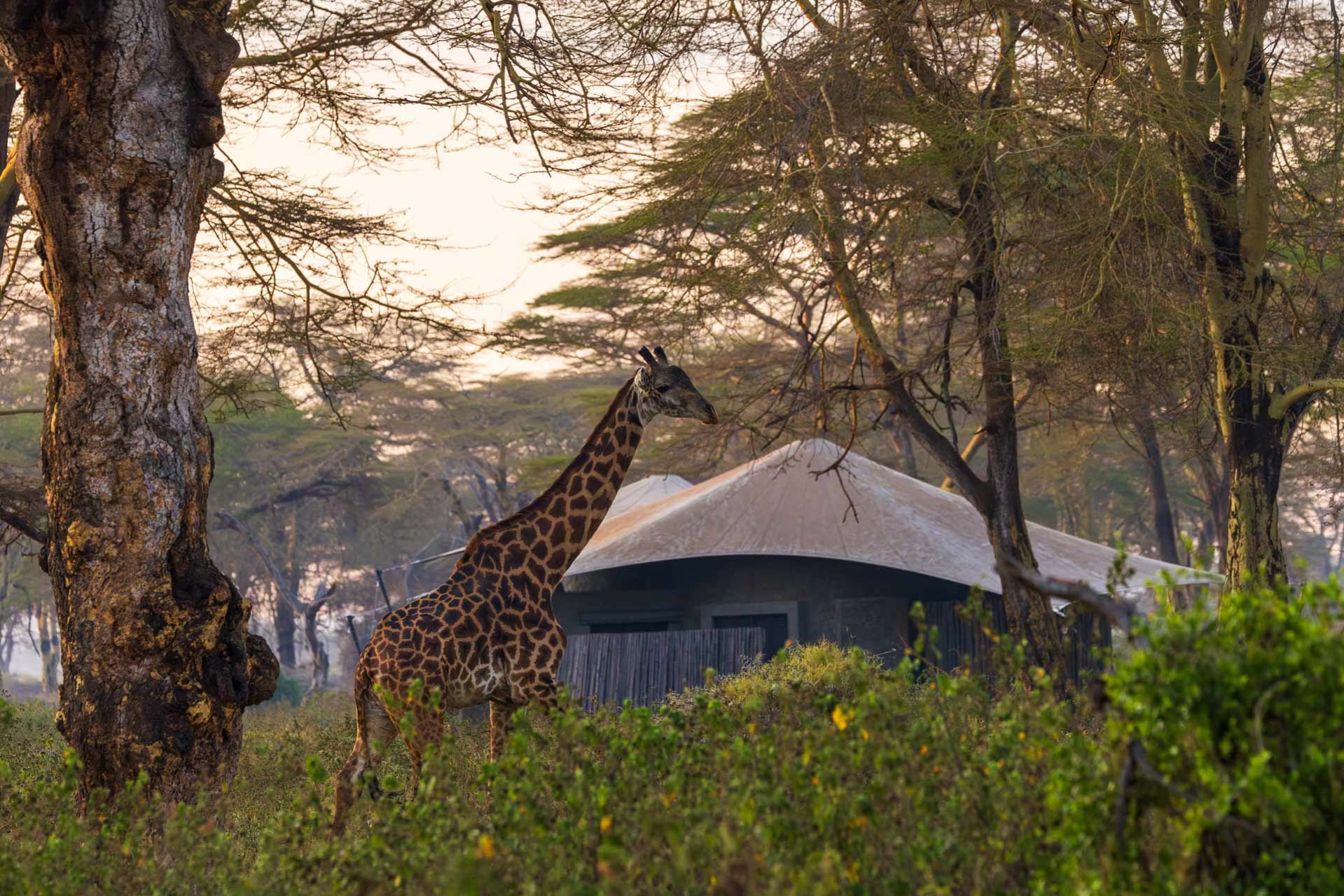
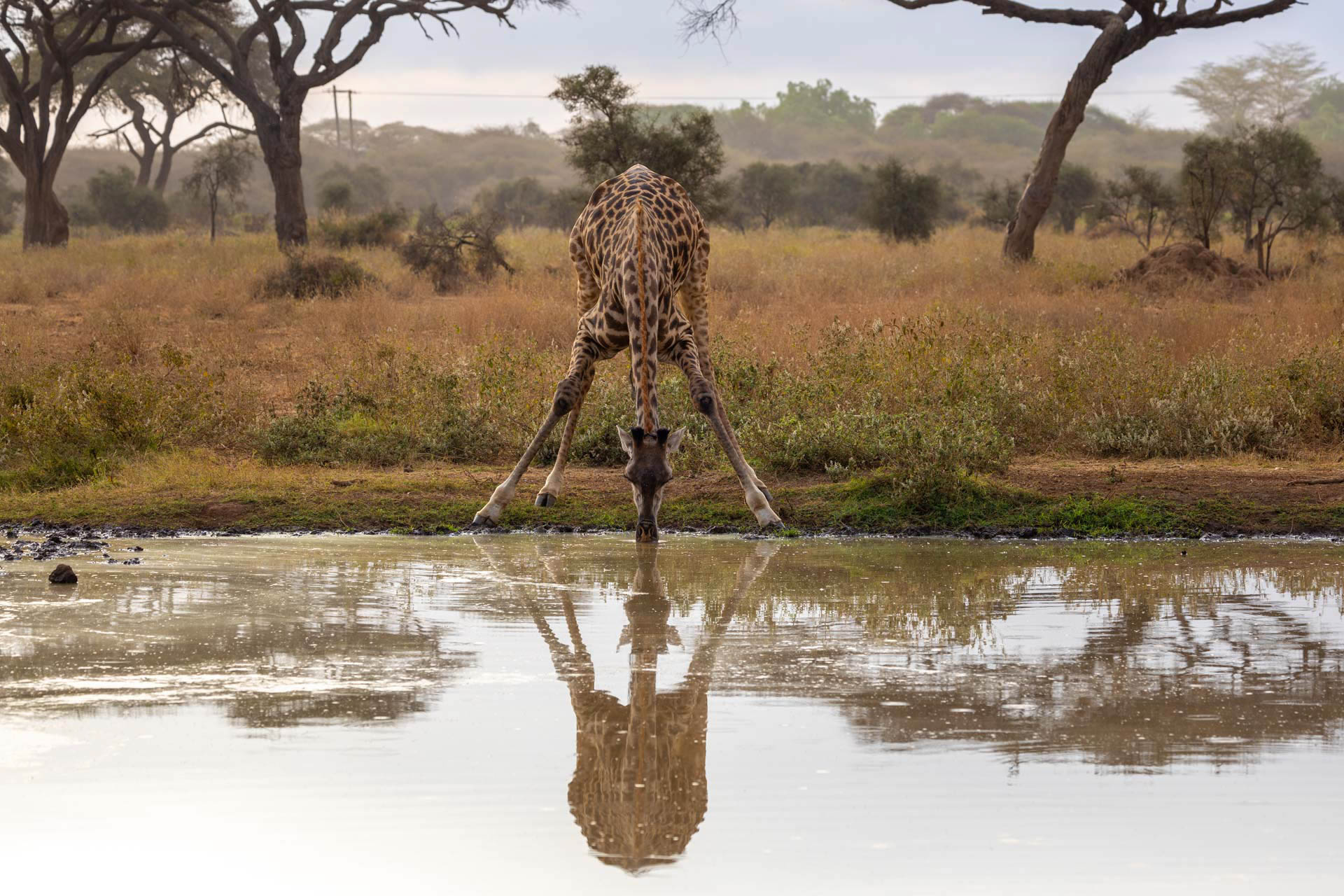
This week, we met Michael, one of the few awe-inspiring Super Tuskers of the Amboseli ecosystem. Born in 1991, he is now 33 years old, and his tusks are already quite impressive. His stature is grand, towering above most average-sized elephants. If not impacted by natural disasters or the unfortunate trophy hunting in neighbouring Tanzania, this massive bull will have ample time to pass on his powerful genes for generations to come.
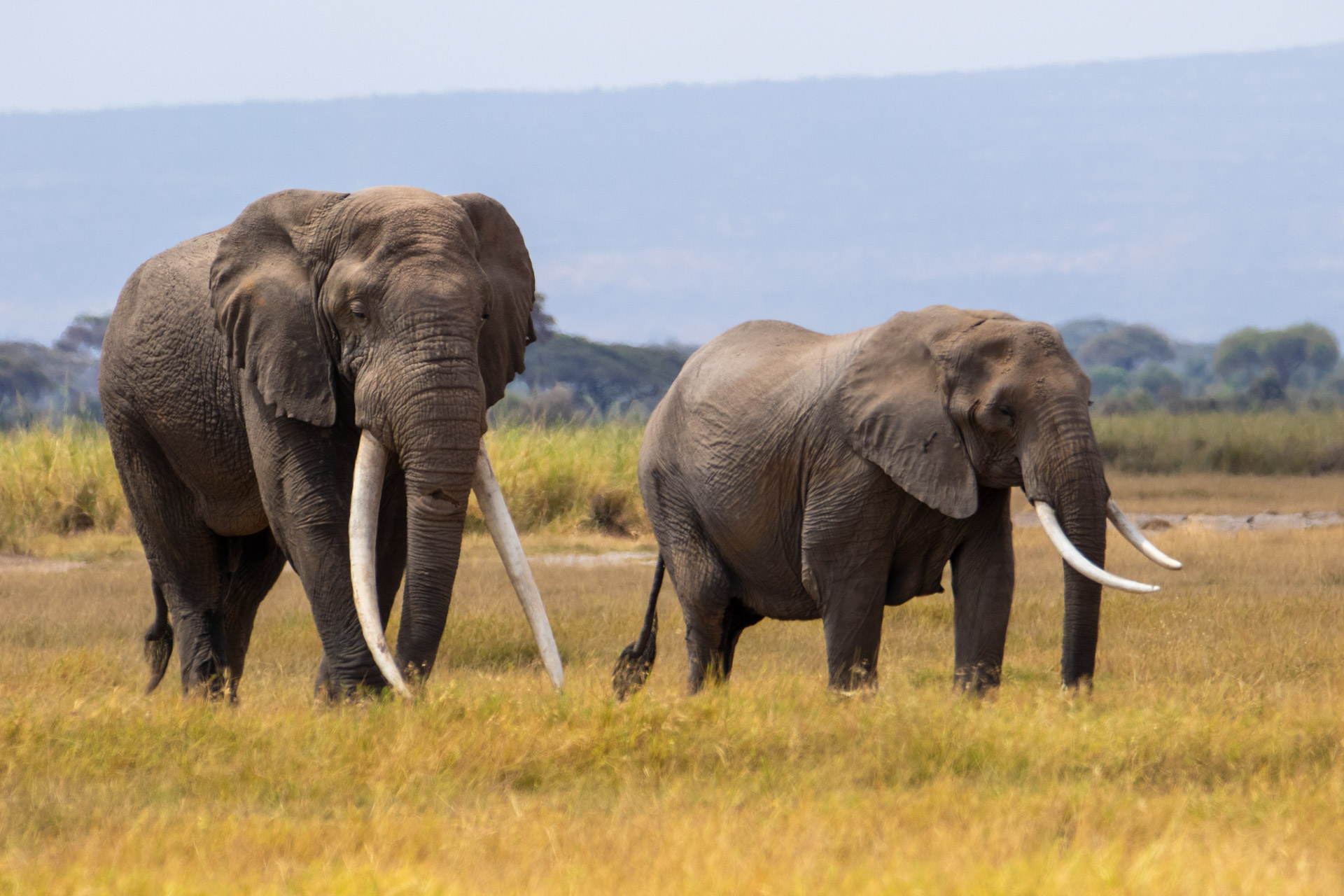
We recently caught up with him and observed that he is currently in musth. He also has a wound on his trunk, which, according to the Amboseli Trust for Elephants (ATE), was inflicted during territorial fights with other bulls. These confrontations are more frequent when bulls are in musth, as they compete for dominance. Strong bulls like Michael often emerge victorious, though not without a few scars, earning the right to mate with females in a chosen herd.

Saddle-billed storks are striking with their colourful red, black, and yellow bills and formidable carnivorous predators. These wading birds hunt a variety of prey, including reptiles, small mammals, and aquatic creatures.
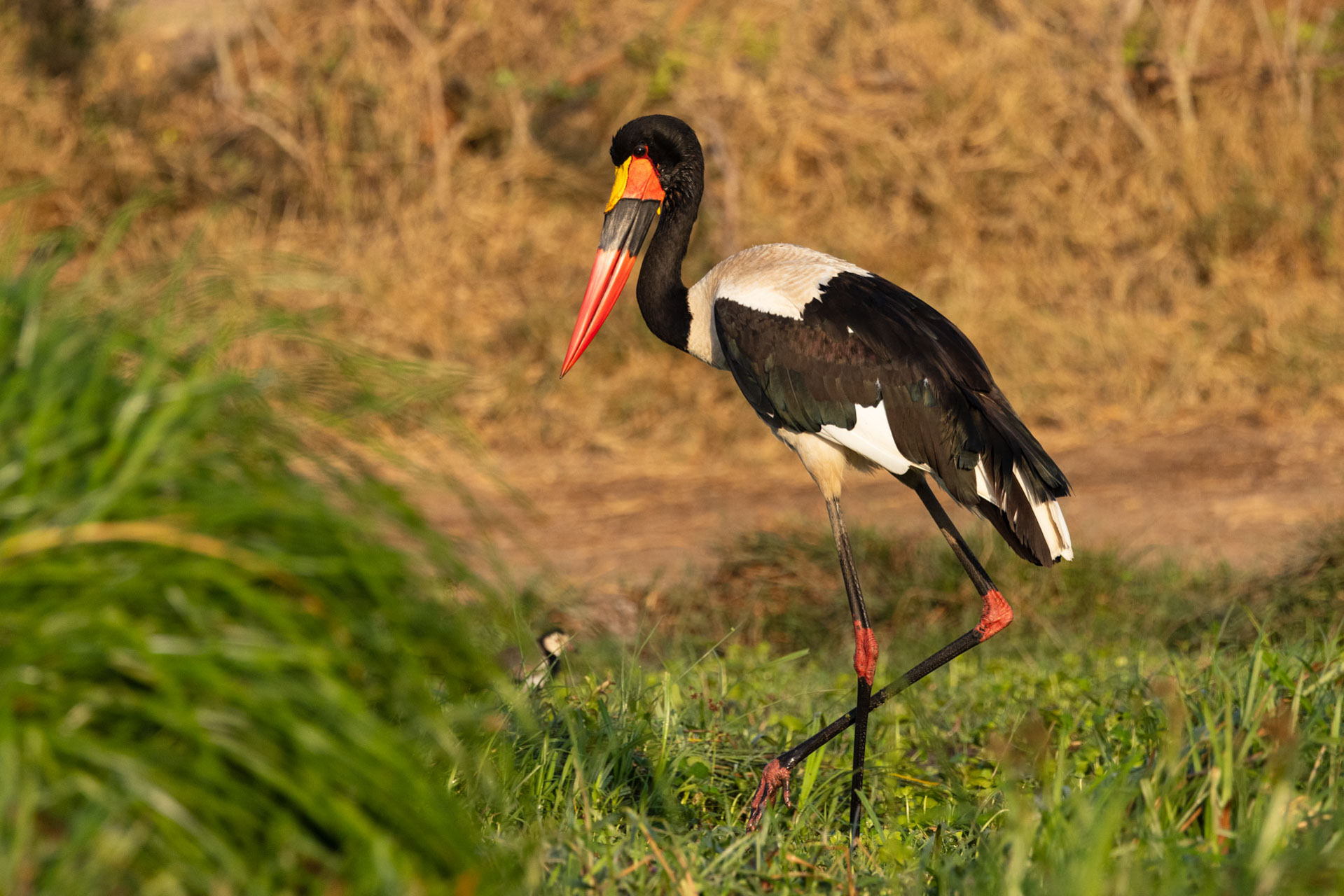
One morning, I spent some time observing a stork’s feeding habits along the marshes of Kimana Stream. These birds typically hunt in the morning or evening when their prey is most active, and they may forage for hours to meet their dietary needs. Watching this stork methodically hunt was a reminder of the intricate harmony that exists within Amboseli's ecosystem.
Excitement is building as we anticipate the arrival of new members to the Kimana Pride. The visual signs from our heavily pregnant resident lioness suggest that birth is imminent. We observed the two lionesses grooming each other, strengthening their bond as they enjoyed the security provided by Male 263 and Osunash.

These powerful predators have claimed the eastern side of Kimana Sanctuary as their territory, often serving as our morning alarms with their powerful roars. The prospect of new cubs is thrilling, as it could lead to the formation of a formidable pride that will dominate the Amboseli-Chyulu Hills corridor.
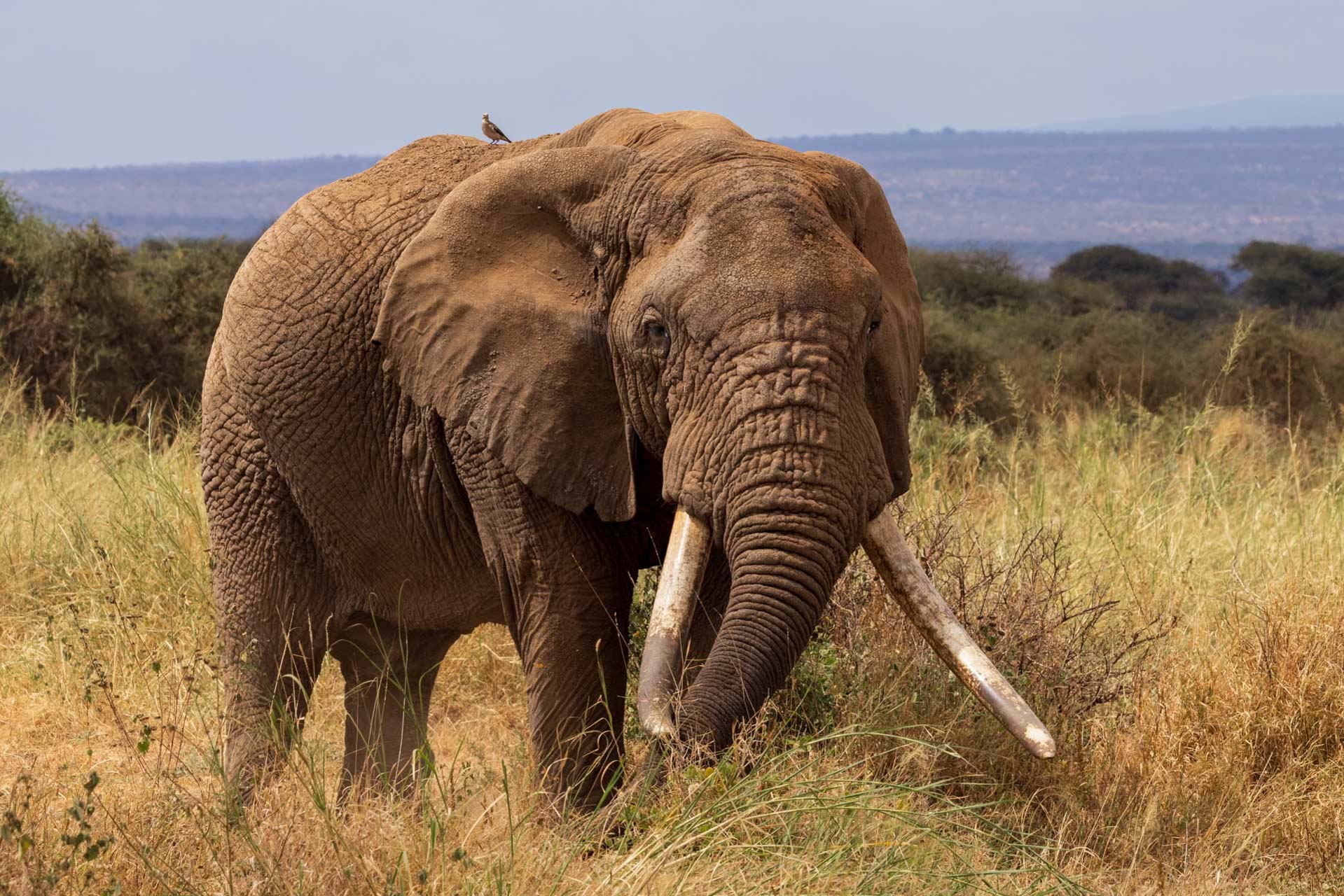

Another notable tusker we saw this week was Conor. This 40-year-old hails from the CB family (who were first recorded as far back as 1973) and is predominantly solitary. This time, however, he was accompanied by two younger bulls who acted as his bodyguards. These younger bulls, in return, receive invaluable life lessons in survival, fighting, and mating. This dynamic is just one of the many fascinating aspects of elephant society, showcasing these remarkable animals' intelligence and social structure.
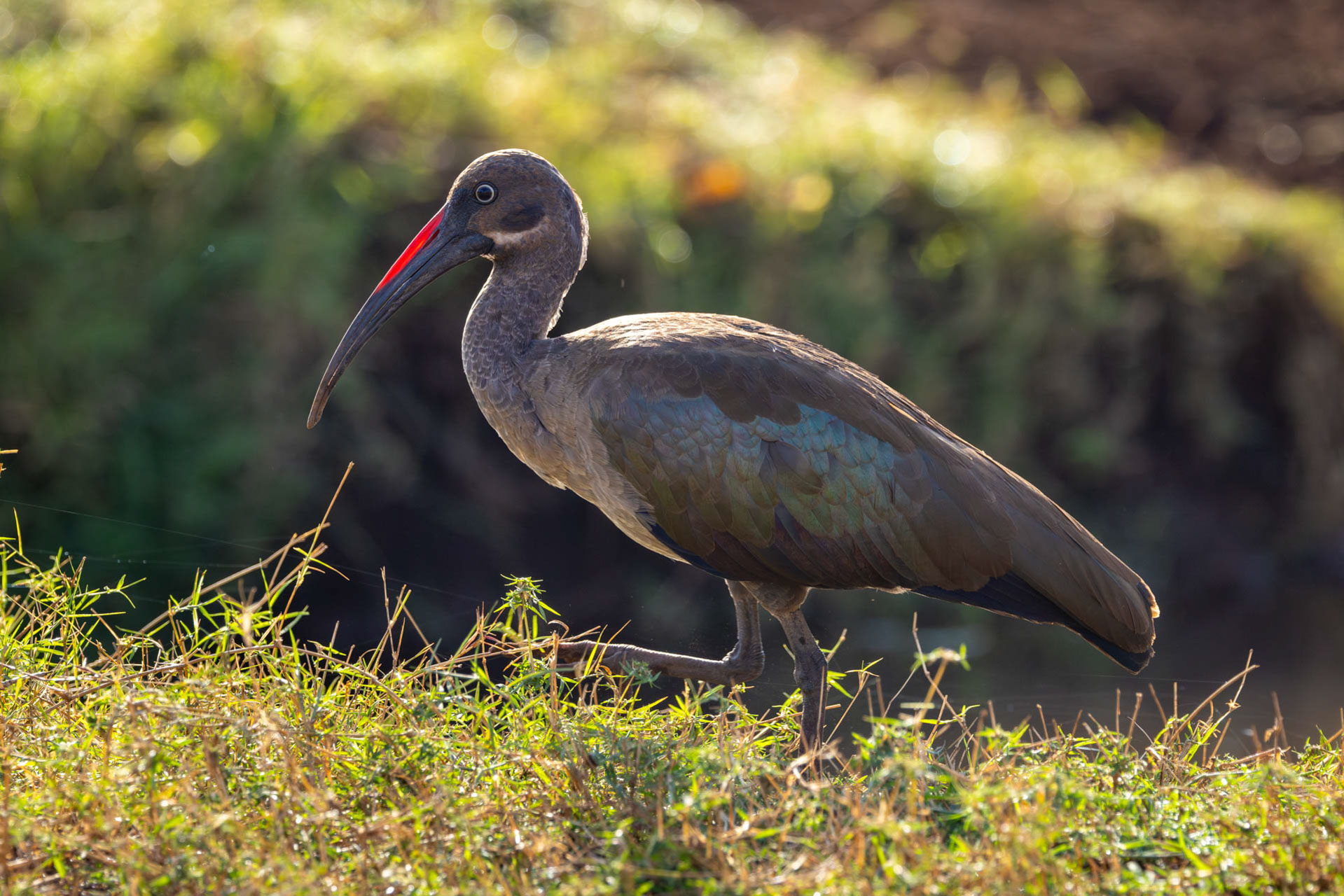
Arguably one of the noisiest birds in Sub-Saharan Africa, the hadada ibis is also the continent's most common aquatic ibis. Its name comes from its distinctive, loud call, which sounds like 'ha-da-a-a-a.' This raucous, trumpeting call is one of the most recognisable sounds of the Amboseli landscape and is synonymous with many inland water bodies across Africa. –Sammy Njoroge
As the evening sun weaves in and out of the clouds, it creates brilliant colours, and in the right light, you see the surface of the sun. Distinct sunspots are visible where parts of the sun are darker than others — these are relatively cool areas on the sun's surface. They are caused by intense magnetic activity that inhibits the flow of heat from the sun's interior to the surface.

This week, we caught up with some of the adult male lions of the Mara Triangle and a new male who was spotted near the Salt Lick area. Sometimes, a lion has a very distinguishing feature that allows us to identify it, and while looking through our photos of the new male, we noticed a distinct lazy eye. After consulting with reliable sources, we were able to confirm that there is a coalition of males called the Kinyangaga Boys, and this specific male is known as Ologil-Enkong’u, which means lazy eye in Maa. We spent some time watching him with a female, lying down and getting up to mate every half an hour.


We also ran into the Nyati boys this week. This time, there were four of them united in a remote part of the Park. It has been some time since I had seen them all together. We watched as they lay in the grass, a sizeable group of wildebeest just within eye distance. They looked well fed, as there had been a plethora of food. These males have undoubtedly become one of the most powerful coalitions in the Mara.


Hyenas are particularly active during Migration in the Maasai Mara, primarily due to the significant increase in prey availability. Millions of wildebeests and zebras create a veritable feast for hyenas, who are opportunistic scavengers and predators. These animals, weakened by the arduous journey or injured during Migration, become prime targets.
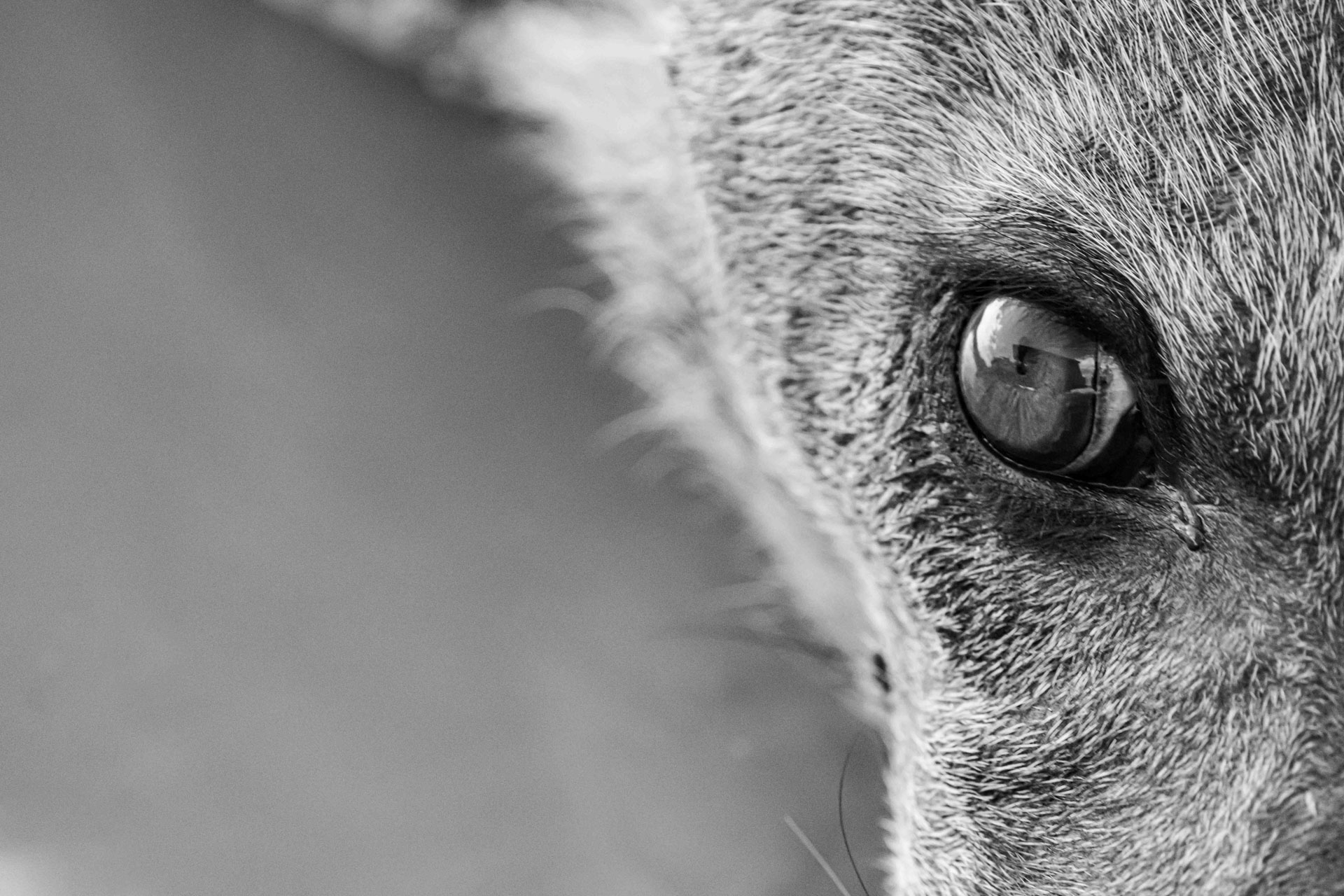
While the abundance of prey presents significant opportunities for hyenas, it also intensifies competition for resources. Lions, leopards, and other predators are also drawn to the mega herds, leading to increased competition for food. Hyenas must be more vigilant and aggressive in their hunting and scavenging efforts to secure their share of the abundant resources.

Japheth from the Photographic Studio team spotted two uncommon species this week. One is called the bush duiker and is only found in forested areas — this one was seen on the way to the Park through the Angama property. Quite elusive, this antelope is one of the smallest ungulates with a compact body and short legs. Their coat is typically reddish-brown with a lighter underside, allowing them to blend well with the forest habitat. Both males and females have a pair of short, straight horns, which are used for defence and disputes over territory.
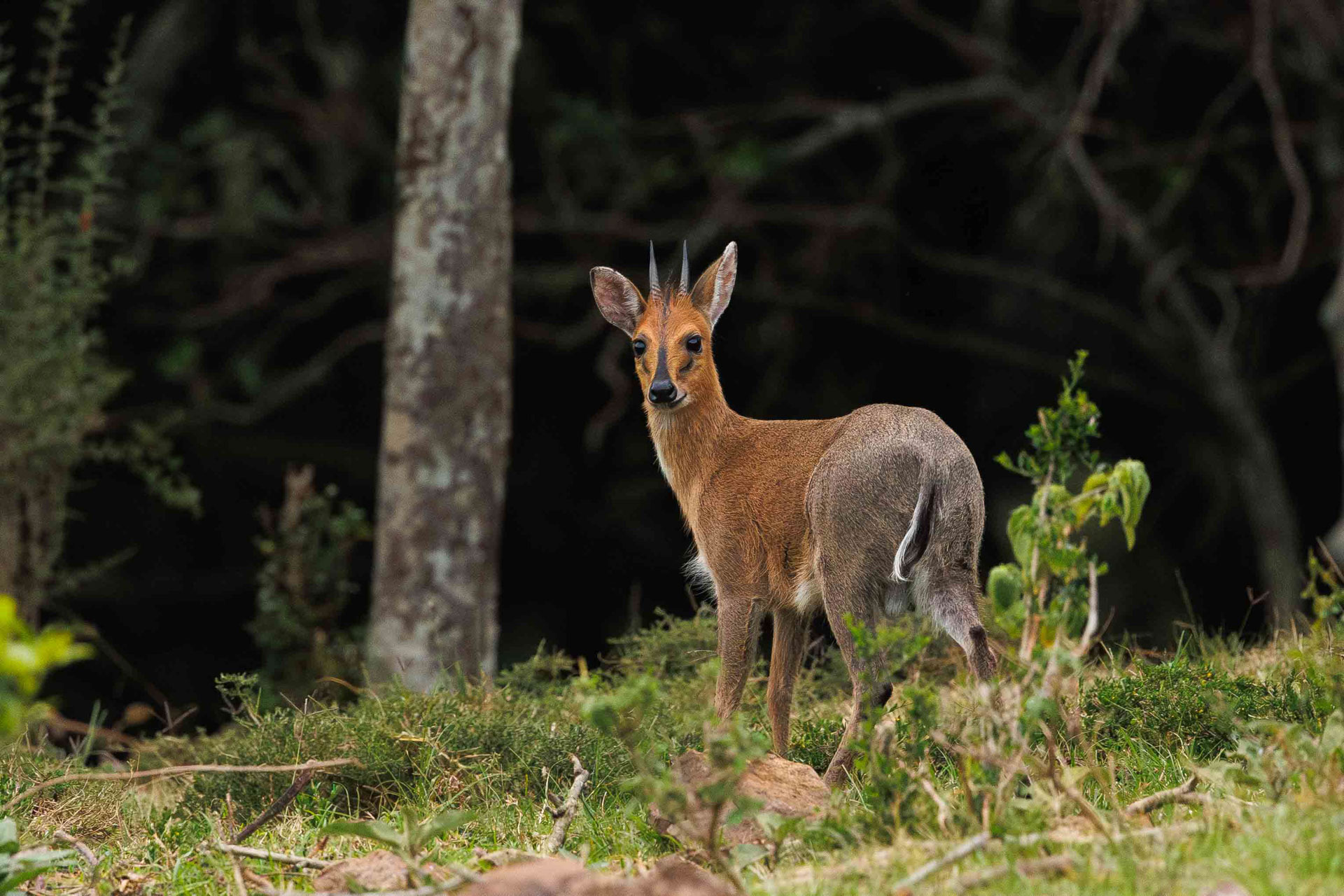
On the same day, he saw a harrier hawk displaying very interesting behaviour. African harrier-hawks are known to prey on young birds of other species. This behaviour is particularly common when young birds are vulnerable, often attacking nests to capture fledglings or even chicks still in the nest.
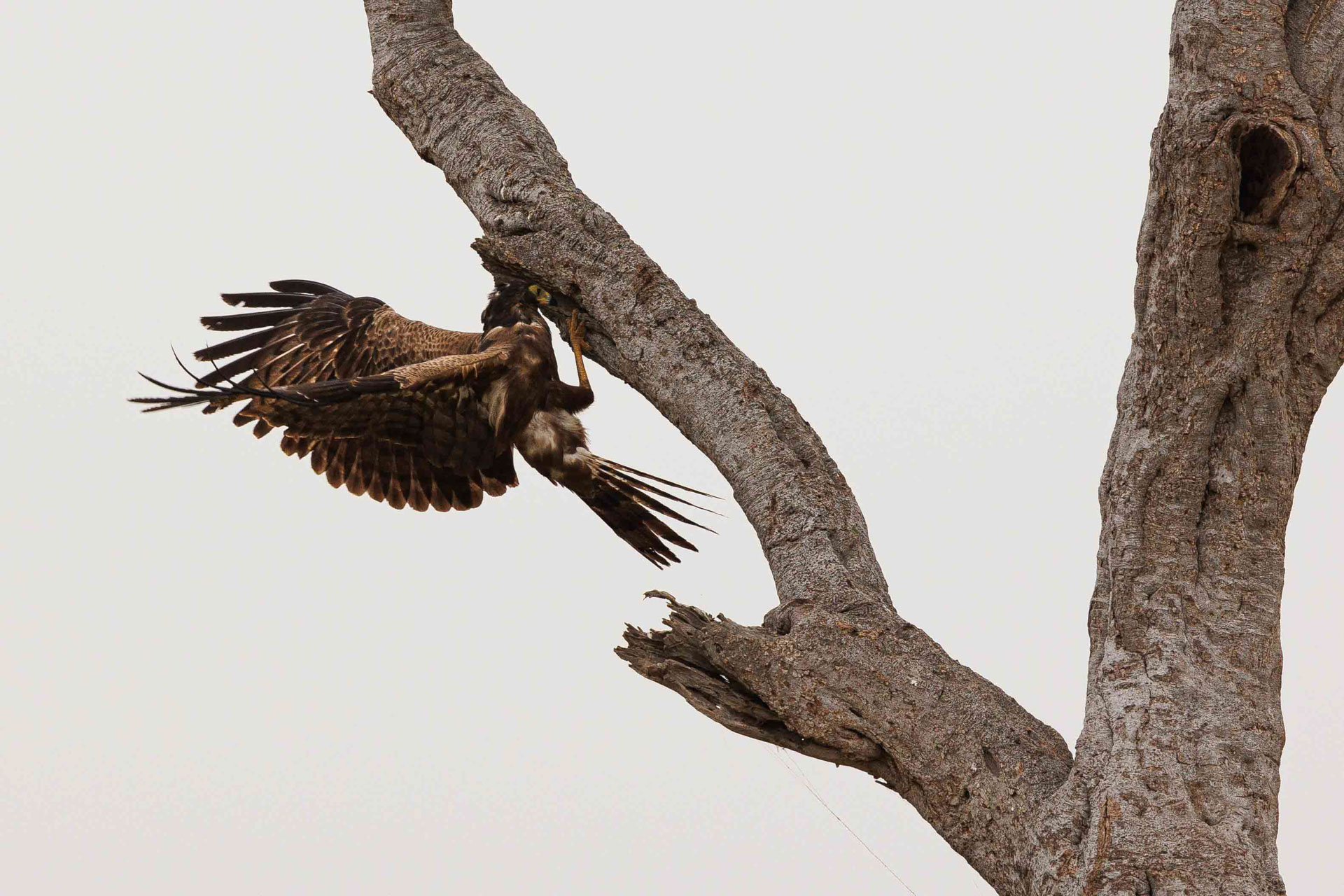
I also had the great fortune of seeing a Goliath heron. As the name suggests, they are truly massive, with a height of up to 1.6 metres (5 feet 3 inches) and a wingspan of up to 2.8 meters (9 feet 2 inches). They are significantly larger than any other heron species. Goliath herons have a large, powerful beak, which they use to catch fish and other aquatic prey.
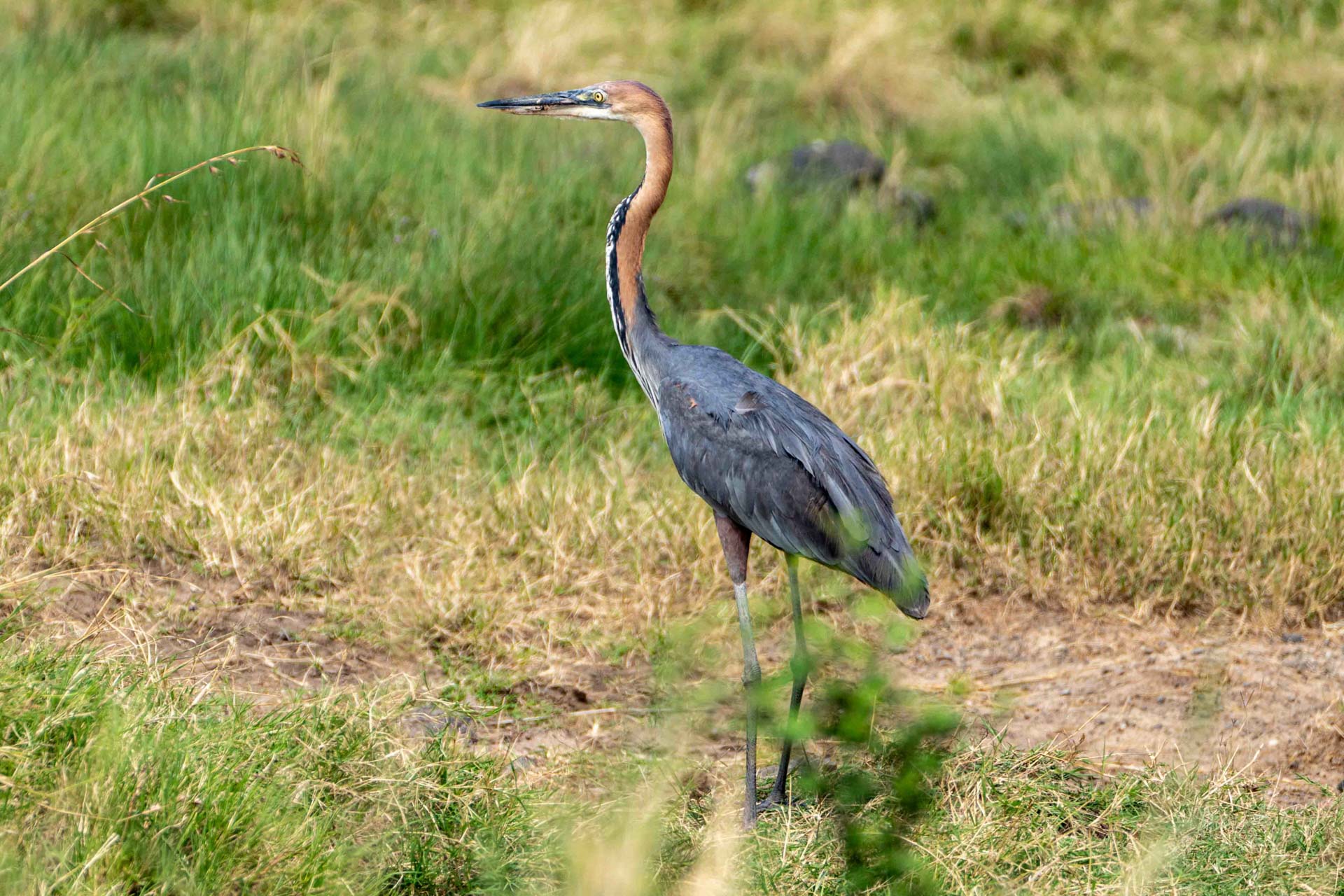
It is very interesting to see how certain cats have learned to anticipate the behaviour of animals. On multiple occasions, we have seen this male leopard near the U Crossing and Maji Machafu area. He seems to know exactly where the wildebeest will be and is taking advantage of the season. Leopards are very opportunistic creatures and will take advantage of any situation to get food — I have seen leopards kill everything from crocodiles to hyenas. The photos make it difficult to tell, but this leopard could be Osidi in the same territory.


To end this week, Japheth captured some images of a fresh zebra kill. This time, it was the Egyptian Pride, with multiple females taking turns feeding on the fresh kill. As mentioned earlier, a plethora of prey is present in the Triangle at this time of year, so we are seeing many cats with wildebeest and zebra prizes. –Andrew Andrawes
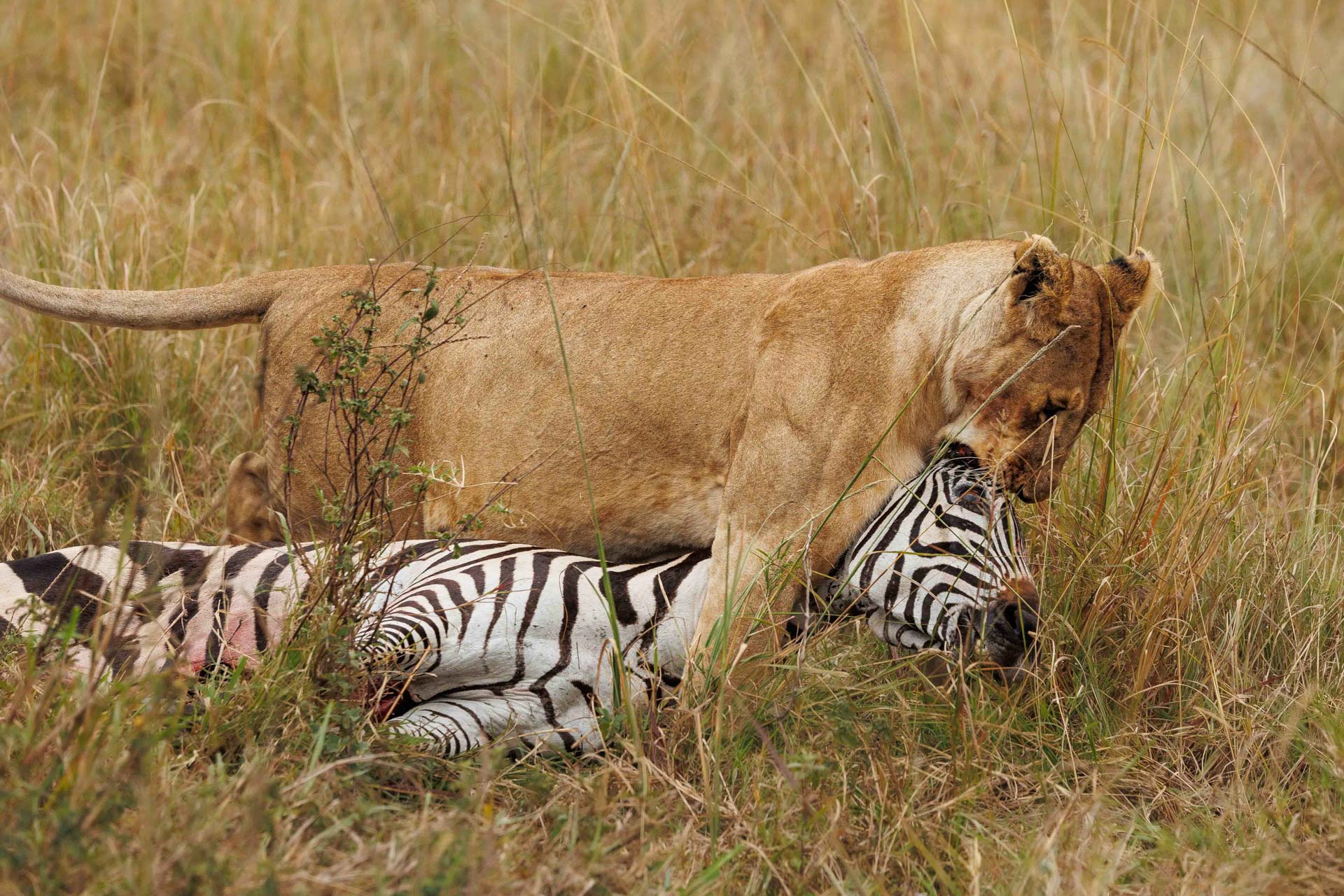
Filed under: This Week at Angama
Subscribe for Weekly Stories
Comments (0):

Weddings in the Mara